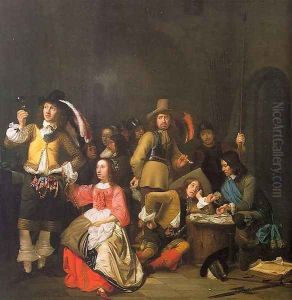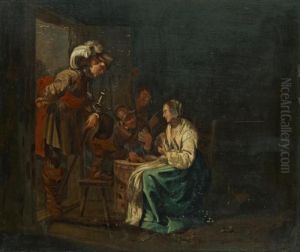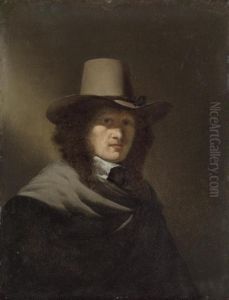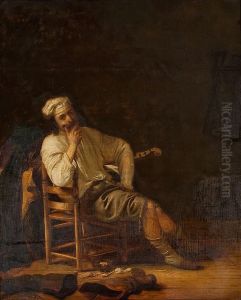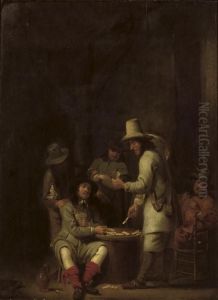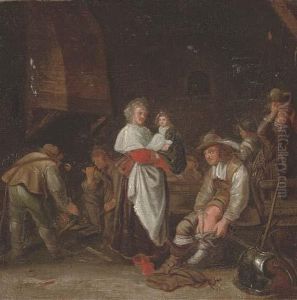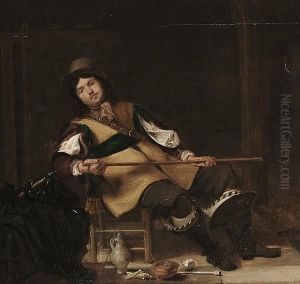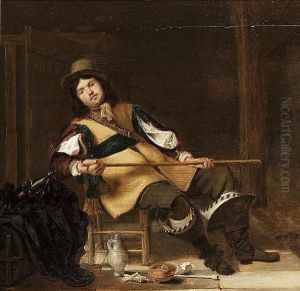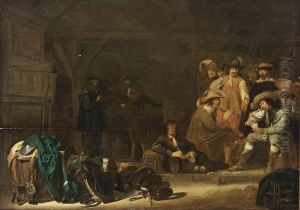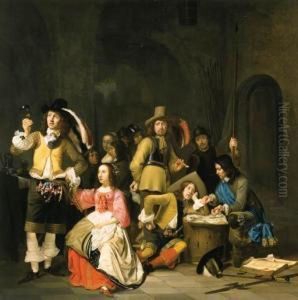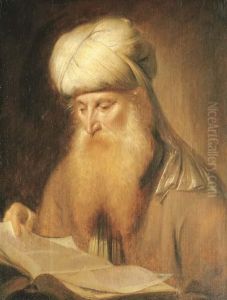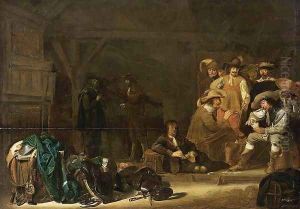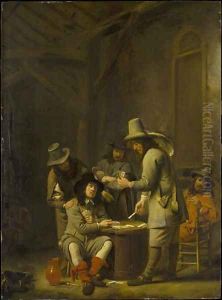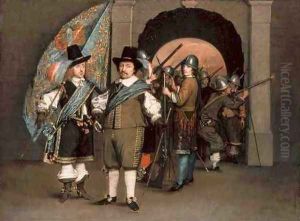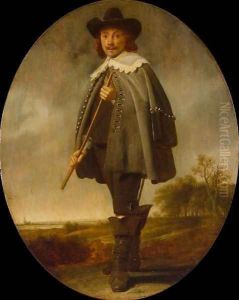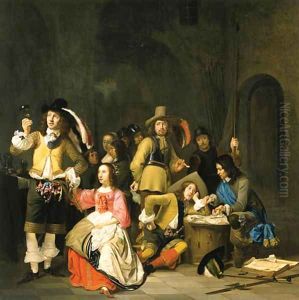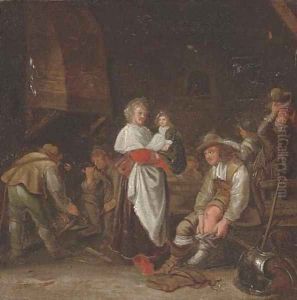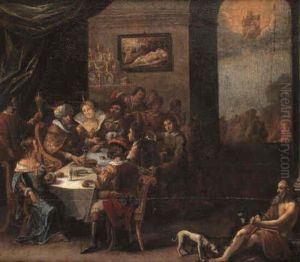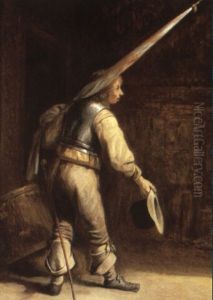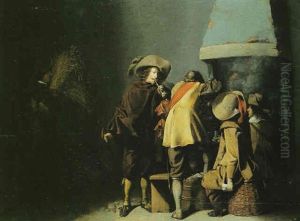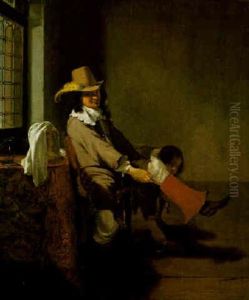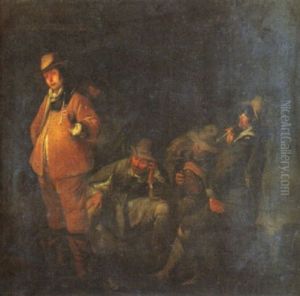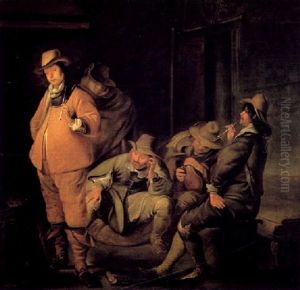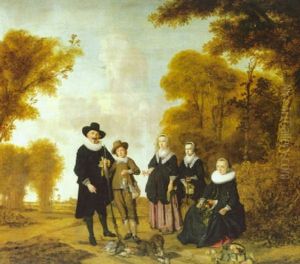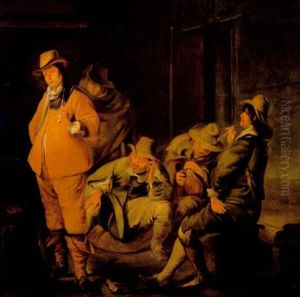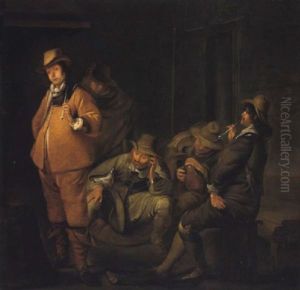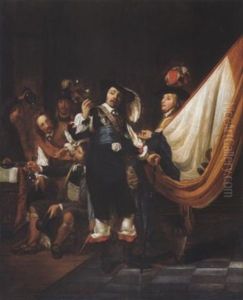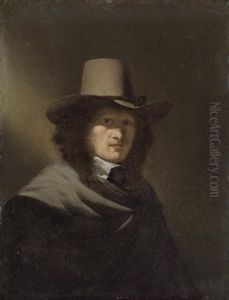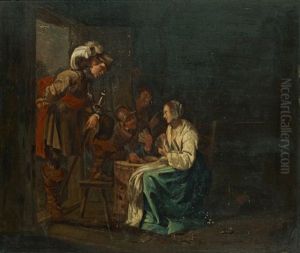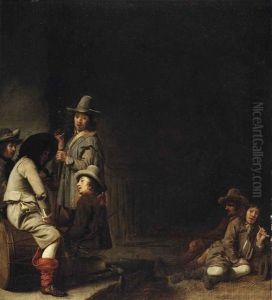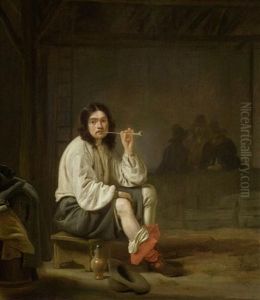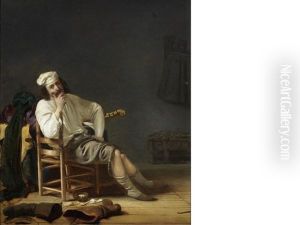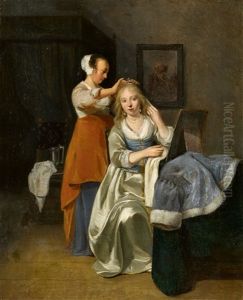Simon Kick Paintings
Simon Kick was a Dutch painter born in 1603 in Delft, Netherlands. He was an active artist during the Dutch Golden Age, a period renowned for its remarkable achievements in the arts, sciences, trade, and the military. Kick specialized in genre painting, focusing on scenes of everyday life, as well as military subjects, and portraits. His works are characterized by their meticulous attention to detail, rich color palette, and the skillful depiction of light and shadow, which imbue his paintings with a sense of realism and immediacy.
Kick's early life and training are not extensively documented, but it is known that he was apprenticed to a painter at a young age and quickly developed his skills as an artist. He became a member of the Guild of Saint Luke in his hometown of Delft, an association of painters, artisans, and other artists, which played a crucial role in his development and recognition as a painter.
Throughout his career, Simon Kick was influenced by the works of other Dutch masters such as Pieter de Hooch and Gerard ter Borch, who were also known for their genre scenes and innovative use of light. Kick's own paintings often depicted soldiers in their daily lives, tavern scenes, and domestic interiors, offering a glimpse into the lives of both the bourgeoisie and the common people of his time.
Despite his contributions to Dutch art, Simon Kick did not gain the same level of posthumous fame as some of his contemporaries. However, his works are still appreciated today for their contribution to the genre painting of the Dutch Golden Age. They can be found in various museum collections, where they continue to be studied and admired for their artistic and historical value.
Simon Kick's life and career were cut short when he died in 1652 in Amsterdam. Despite the relatively limited number of his surviving works, Kick's paintings remain a testament to the vibrancy and diversity of Dutch Golden Age art, reflecting the societal and cultural dynamics of 17th-century Netherlands.
